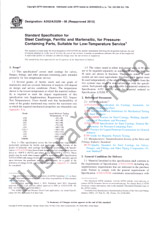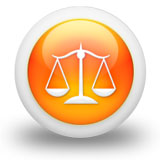Potřebujeme váš souhlas k využití jednotlivých dat, aby se vám mimo jiné mohly ukazovat informace týkající se vašich zájmů. Souhlas udělíte kliknutím na tlačítko „OK“.
ASTM D7215-22
Standard Test Method for Calculated Flash Point from Simulated Distillation Analysis of Distillate Fuels
Přeložit název
NORMA vydána dne 1.11.2022
Informace o normě:
Označení normy: ASTM D7215-22
Datum vydání normy: 1.11.2022
Kód zboží: NS-1089375
Počet stran: 4
Přibližná hmotnost: 12 g (0.03 liber)
Země: Americká technická norma
Kategorie: Technické normy ASTM
Kategorie - podobné normy:
Anotace textu normy ASTM D7215-22 :
Keywords:
calculated flash point, diesel fuel, flash point, jet fuel, MSPEX, PLS, simulated distillation,, ICS Number Code 75.160.20 (Liquid fuels)
Doplňující informace
| Significance and Use | ||||||||||||||
|
4.1?The flash point temperature is one measure of the tendency of the test specimen to form a flammable mixture with air under controlled laboratory conditions. It is only one of a number of properties that must be considered in assessing the overall flammability hazard of a material. 4.2?Flash point is used in shipping and safety regulations to define flammable and combustible materials. Consult the particular regulation involved for precise definitions of these classifications. 4.3?Flash point can indicate the possible presence of highly volatile and flammable materials in a relatively non-volatile or non-flammable material. 4.4 In cases where Test Method D2887 data are available, that is, for determination of boiling range distribution or calculation of other physical properties, this test method provides a calculation method for flash point without performing an additional analysis. Table 1 shows the ranges for the IBP, 5 %, and 10 % results for each equation. 4.5?In the case where the flash point of a fuel has been initially established, the calculated flash point is useful as a flash point check on subsequent samples of that fuel, provided its source and mode of manufacture remain unchanged. |
||||||||||||||
| 1. Scope | ||||||||||||||
|
1.1?This test method covers the calculated flash point formula, which represents a means for directly estimating the flash point temperature of distillate fuels from Test Method D2887 data. The value computed from the equation is termed the calculated flash point. The calculated flash point formula is applicable to diesel fuel samples based on a correlation to Test Method D93 over the range from 47 ?C to 99 ?C, and to jet fuel samples based on a correlation to Test Method D56 and Test Method D3828 over the range from 35 ?C to 67 ?C. 1.2?The calculated flash point formula is valid for diesel and jet fuels with an IBP between 90 ?C and 162 ?C (194 ?F and 324 ?F), Test Method D2887 5 % recovery temperature between 136 ?C and 207 ?C (277 ?F and 405 ?F), and Test Method D2887 10 % recovery temperature between 142 ?C and 222 ?C (288 ?F and 432 ?F). For each flash point test method (Test Method D56, Test Method D93, and Test Method D3828) a separate equation has been established. See 4.4 for a detailed overview of the simulated distillation IBP, 5 %, and 10 % ranges per equation. 1.3?A calculated diagnostic parameter, not exceeding a given threshold value, is a prerequisite for acceptance of the calculated flash point. 1.4?The diagnostic parameter MSPEX (Mean Summed Prediction Error) checks the sample compliance, based on reconstruction of TNote 1:?It is important to note that calculated flash point results, at this time, are not recognized by regulatory organizations in verifying conformance to applicable regulations. Note 2:?The calculated flash point derived from simulated
distillation data depends upon the accuracy of determination of the
IBP temperature and the 5 % and 10 % recovery
temperatures.
Note 3:?If the user's specification requires a defined flash
point test method other than this test method, neither this test
method nor any other test method should be substituted for the
prescribed test method without obtaining comparative data and an
agreement from the specifier.
1.5?The values stated in SI units are to be regarded as the standard. 1.5.1?ExceptionThe values given in parentheses are for information only. 1.6?This standard does not purport to address all of the safety concerns, if any, associated with its use. It is the responsibility of the user of this standard to establish appropriate safety, health, and environmental practices and determine the applicability of regulatory limitations prior to use. 1.7?This international standard was developed in accordance with internationally recognized principles on standardization established in the Decision on Principles for the Development of International Standards, Guides and Recommendations issued by the World Trade Organization Technical Barriers to Trade (TBT) Committee. |
||||||||||||||
| 2. Referenced Documents | ||||||||||||||
|
Doporučujeme:
Aktualizace zákonů
Chcete mít jistotu o platnosti užívaných předpisů?
Nabízíme Vám řešení, abyste mohli používat stále platné (aktuální) legislativní předpisy.
Chcete vědět více informací? Podívejte se na tuto stránku.




 Cookies
Cookies
